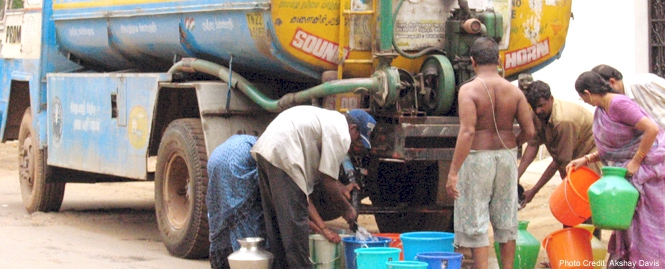Chennai, India

In 2003-2004, Chennai (formerly Madras) suffered a crippling water crisis. Reservoirs dried up, the piped supply system shut down and most private wells went dry, forcing city residents to rely primarily on expensive imported water brought in by tanker trunks operated by private vendors. GFI researchers determined that improving water-distribution efficiency, along with harvesting rainwater to recharge the aquifer, could meet Chennai’s growing water needs.
The local utility had proposed to build desalination plants. But desalination is a costly process, and in Chennai, water is unmetered and thus practically free to residents. Our research team studied the Chennai water crisis and determined that there was a more cost effective solution. In densely populated metropolitan Chennai, much of the water comes from consumers’ private wells in addition to the piped network. We determined that improving efficiency of the existing piped network, along with harvesting rainwater to recharge the aquifer, could meet Chennai’s growing water needs at a much lower cost than desalination.
The GFI team recommended metering and raising the price of treated potable water to reduce the demand for piped water and provide public funds to fix the crumbling piped supply system. The researchers also recommended establishing a dual-quality system in which all water pumped into the piped network is treated at a central facility, while community wells continue to supply lower quality, untreated water for non-potable purposes. The aquifer would be recharged through rooftop rainwater harvesting to ensure that wells would not go dry.
These recommendations draw on a key theme in urban water management: namely, that high-quality treated water is only necessary for drinking, cooking and hand washing. In fact, most water used domestically goes to toilet flushing, bathing and laundry.
In combination with our findings from research in Mexico’s Yaqui Valley, we drew three wide-reaching conclusions. First, water supplies in developing regions are on the vulnerable edge of sustainability, because people tend to forget past water crises. In other words, when droughts end, the incentive for dealing with future supply problems disappears. Second, central water managers have been ineffective in addressing water crises. Third, integrated predictive models enable policymakers to better manage future crises.